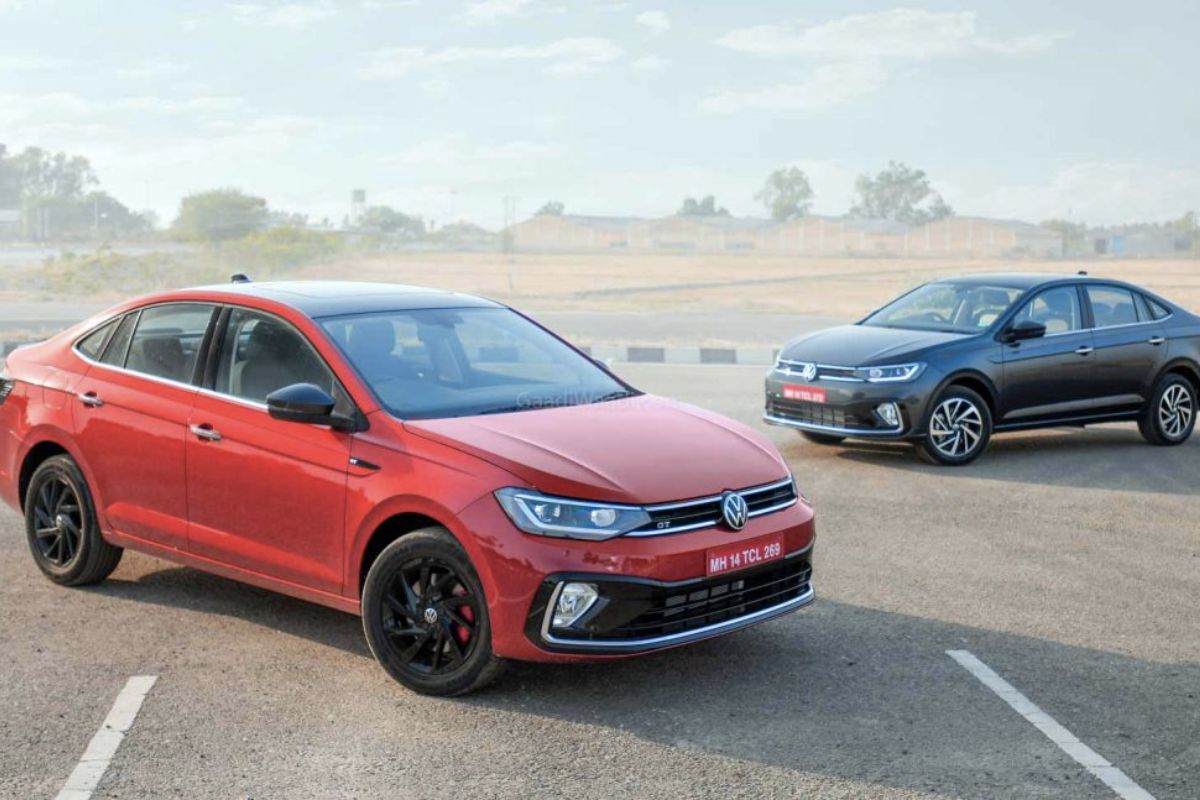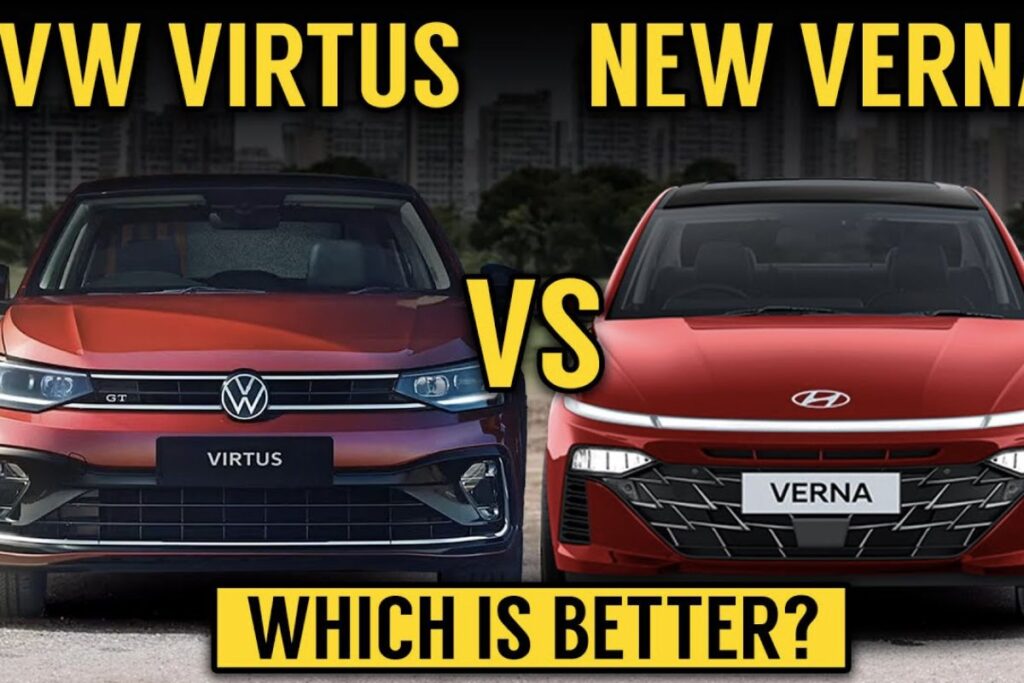“Battle of the Mid-Size Sedans: Hyundai Verna vs Volkswagen Virtus – Which One Comes Out on Top? Discover the Ultimate Comparison of Features, Specs, and Value to Help You Choose Your Perfect Ride!”
The Hyundai Verna and Volkswagen Virtus are two popular mid-size sedans in the Indian market. The Verna, which was first introduced in 2006, has undergone multiple updates and is now in its fifth-generation model. It is known for its spacious and comfortable cabin, fuel-efficient engines, and smooth ride quality. The Volkswagen Virtus, on the other hand, is a relatively newer model that was launched in India in 2021. It is a premium offering from Volkswagen and is known for its powerful and refined engine, precise handling, and premium interior with excellent build quality.
Both the Verna and Virtus are great options for buyers who are looking for a practical and comfortable sedan with a good balance of performance and fuel efficiency. In this comparison, we will take a closer look at the specifications, features, and overall value proposition of both cars to help you make an informed decision on which one is the right fit for you.

Verna vs Virtus price, variants
| Model | Price Range (INR) | Variants |
|---|---|---|
| Hyundai Verna | 9.10 lakhs – 15.19 lakhs | E, S, SX, SX(O) |
| Volkswagen Virtus | 10.00 lakhs – 17.00 lakhs | Comfortline, Highline, Highline Plus |
Verna vs Virtus Specs and features
| Model | Engine Options | Power Output | Transmission Options | Fuel Efficiency | Infotainment System | Safety Features |
|---|---|---|---|---|---|---|
| Hyundai Verna | 1.5L Petrol, 1.5L Diesel, 1.0L Turbo Petrol | 115 PS, 115 PS, 120 PS | 6-speed MT, 6-speed AT, 7-speed DCT | 17.7 kmpl, 25 kmpl, 19.2 kmpl | 8-inch touchscreen with Android Auto & Apple CarPlay | Dual front airbags, ABS with EBD, rear parking sensors, speed sensing door locks |
| Volkswagen Virtus | 1.0L TSI Petrol | 110 PS | 6-speed MT, 6-speed AT | 18.24 kmpl | 8-inch touchscreen with Android Auto & Apple CarPlay | Dual front airbags, ABS with EBD, rear parking sensors, speed sensing auto door locks, rain sensing wipers, cruise control |
Verna vs Virtus
| Hyundai Verna Competitors | Volkswagen Virtus Competitors |
|---|---|
| Honda City | Honda City |
| Maruti Suzuki Ciaz | Maruti Suzuki Ciaz |
| Skoda Rapid | Skoda Rapid |
| Toyota Yaris | Hyundai Verna |
Conclusion
In conclusion, the Hyundai Verna and Volkswagen Virtus are both great choices in the mid-size sedan segment in India. The Verna is known for its comfortable and spacious cabin, smooth ride quality, and fuel-efficient engines. On the other hand, the Virtus offers a refined and punchy engine, precise handling, and a premium interior with excellent build quality.
Ultimately, the choice between these two cars comes down to personal preferences and priorities. If you’re looking for a comfortable and practical sedan with good fuel efficiency, the Verna may be the better option for you. But if you prioritize a powerful and engaging driving experience with a premium and well-built cabin, the Virtus could be the way to go. It’s recommended to take a test drive of both cars and compare them side by side to make an informed decision.
Read More:

